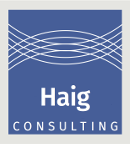Successful back pain management requires a community approach. Operation FastBack is a proven system-wide approach to addressing back pain while reducing cost, increasing efficiency and measuring outcomes. The strategy involves several sophisticated elements:

Back Pain Issues
Back pain is the most costly and one of the most complex problems facing health care systems and health plans. It’s an important precursor to the epidemic of opiod additiction, chronic joblessness and even death. At the same time, changes in payment structures mean that health care systems may have to squeeze quality and profitability out of the whole spectrum of spine care.
Physician Role
Most back pain waxes and wanes, getting better and returning on its own. So the clinician’s job in acute back pain management is to detect dangerous causes, provide treatment, and prevent future harm. But there is ample evidence that emergency room (ER) and primary care physicians (PCPs) need help in that role, especially to help avoid unnecessary advanced imaging, risky surgery and opiod prescription.
Physiatry Expertise
The medical specialty of physical medicine and rehabilitation has been practiced for more than 70 years, and it’s increasingly clear that the physiatrist is a key player in spine care. These physicians are extensively trained in musculoskeletal diagnosis, psychological barriers to recovery, team leadership, and disability management. They can provide expertise in ways no other doctor can. Engaging physiatrists as program leaders is at the core of Haig COnsulting strategies.
Teamwork Approach in the ER
FastBack’s advanced protocol components and educational materials create a tight integration of a physiatrist and therapies. Our approach of addressing appropriate back pain cases through referrals from the initial ER treating clinician has proven to make a tremendous difference in patient outcomes. In a controlled trial, we instituted a robust teamwork consulting process between emergency medicine and physiatry. It included educating emergency staff and clinicians, as well as the commitment of a physiatrist to see patients within 48 hours if requested. The coordinated project resulted in an astounding 80% drop in one-month “bounce back” patients, less use of narcotics, and an increase in detection of dangerous disease. Our FastBack Emergency product puts this research into action.
Intervention for Subacute Pain
Expertise in treating those who are recovering but still have pain can lie beyond the reach of primary care. Diagnostic tests such as MRI and electrodiagnosis often mistakenly point to surgery, which involves costs and risks for the patient – and uncertain outcomes. Physiatrists provide expert opinion on the adequacy of previous therapy, an understanding of functional needs such as work demand and ergonomics, and the risk of future disability. Haig Consulting worked with Priority Health, a major Western Michigan insurer, to require a physiatrist consultation on all non-emergency patients referred by PCPs to a surgeon. The results were dramatic, with a 25% drop in surgery, a 12% decrease in overall spine-related cost per member per month, and continued patient satisfaction. Our FastBack Subacute provides a specific plan to implement this protocol.
Addressing Chronic Pain
It’s a sad, system-wide problem: PCPs tire of ongoing narcotics arguments with depressed or dysfunctional patients. Surgeons see clinic rooms filled with failures instead of new chances to cure. What to do? Research shows that addressing psychological disease, social stress, and profound physical deconditioning – instead of just pain – actually results in less pain, fewer operations, and decreased overall healthcare utilization. One study of 500 cases showed that the resulting recommendations included everything from halting treatment to surgery to a multidisciplinary team approach to addiction management to health club membership. Our solution, FastBack Chronic Pain, includes training in single-visit multidisciplinary assessments independent of any specific treatment protocol.
Preventing Back Pain
All of these issues can be diminished when the medical community understands both the need for proactive back care and the options available for treatment. Yet efforts to prevent pain have largely failed. Our unique approach to preventing disability and medical misadventure gets at the pain, suffering, and cost that cause public health concern. Through invited commentaries in Managed Care and PM&R, Haig Consulting has shown that messaging about preventing medical misadventure compliments primary care teaching. Our FastBack Prevention provides information, education – and even a fun video game – to help anyone understand the options when it comes to keeping healthy.
Incentive for Performance
With our Operation FastBack clients, Haig Consulting negotiates payment and incentives with payers and providers to establish spine leaders for regions or health systems. Haig Consulting works with the spine leaders to create certain desired behaviors, such as promotion of FastBack Emergency in the ER or leadership of team meetings for single-visit chronic assessments.
Next Steps
There are real barriers to making changes within health care. It involves managerial alignment and appropriate incentives at all levels for a health care system to bring together the core spine team, along with space, logistics, marketing, informatics, and quality improvement processes. The team needs to answer to the same boss. Cultural barriers will persist: This approach is simply different from the way health care has been played for the last half century. Haig Consulting, can co-author plans that suit any health care setting. Contact us today!
